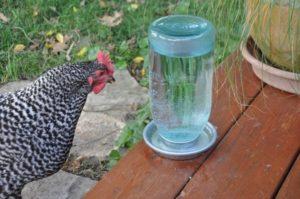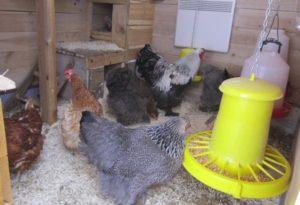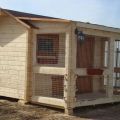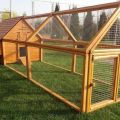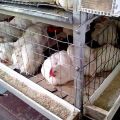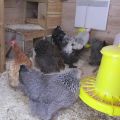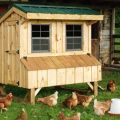Step-by-step instructions on how to make a chicken coop for 10 chickens with your own hands
When keeping a small livestock in a private household, it is enough to build a chicken coop for 10 chickens with your own hands. When performing construction work, you need to take into account a number of features so that the building is comfortable and convenient for birds.
Technical features of a chicken coop for 10 chickens
Before you start building a poultry house, you need to decide on the technical characteristics. To do this, you should assess the availability of free space on the site and designate the purpose of breeding laying hens - obtaining fresh eggs for consumption or further sale in large volumes.
Optimal size and area
Particular attention should be paid to calculating the dimensions of the room. If chickens are in close quarters, this will negatively affect the performance indicator. As a rule, one free square is enough for three layers. For 10 chickens, a room with an aspect ratio of 2 x 2 m is enough. If you want to increase the livestock in the future, you need to expand the chicken coop in proportion to the number of birds. It is necessary to decide on the specific dimensions of the premises at the stage of project preparation, not forgetting to take into account the presence of a courtyard area for walking. The minimum dimensions of the outdoor enclosure are 2 x 6 m.
Blueprints
The initial stage of construction is the preparation of drawings. The diagram indicates the dimensions of the structure, the location on the site and the materials used. To create comfortable conditions for layers, you also need to provide for the internal arrangement of the chicken coop.
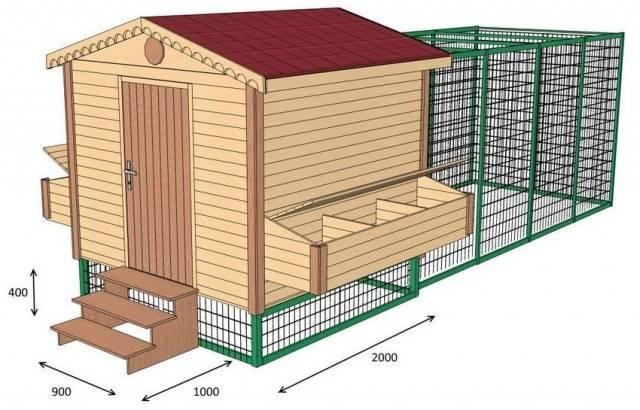
What is the difference between summer and winter construction?
The summer design is simple to implement and relatively cost effective. The construction will require a minimum amount of building materials and basic construction skills.
A distinctive feature of the summer poultry house is the absence of a foundation, since such chicken coops are built on the basis of additional protection of layers from rodents and predators.
The winter poultry house must be provided with a foundation. To keep the house warm during the winter, it is recommended to attach an additional vestibule in front of the main entrance to the house. The interior arrangement of a winter and summer chicken coop should include a standard list of amenities - lighting, ventilation, heating appliances, comfortable nests and flooring.
Where to locate?
A light height, protected from blowing through, is suitable for placing the poultry house.It is advisable to choose the south side of the site so that the chickens get more natural light. Do not build a chicken coop in the lowlands, as the rain will wash out the chicken droppings, which will lead to its spread throughout the site and the transfer of infections. The distance from the premises to the border of the site should be from 4 m.
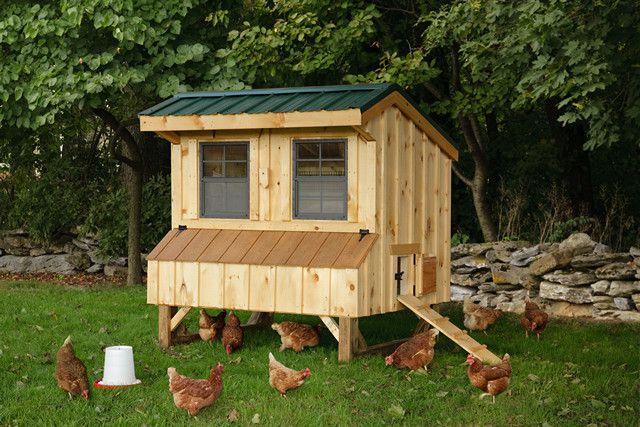
Necessary tools and materials for construction
Before starting construction, you need to prepare a standard set of tools. The materials for building the house depend on the intended use. The summer variety can be built from plywood and planks. A winter chicken coop is allowed to be made of the same materials and additionally use an insulating layer. Styrofoam and mineral wool are suitable as insulation.
Construction stages
Construction is recommended to be carried out in stages, following the provisions of the instructions. To build a reliable and durable structure, you need to adhere to standard rules and regulations.
Foundation
The base of the building is the foundation. For a poultry house for 10 chickens, you can choose any type of foundation, but columnar and tape are most suitable. The order of work is determined depending on the type.
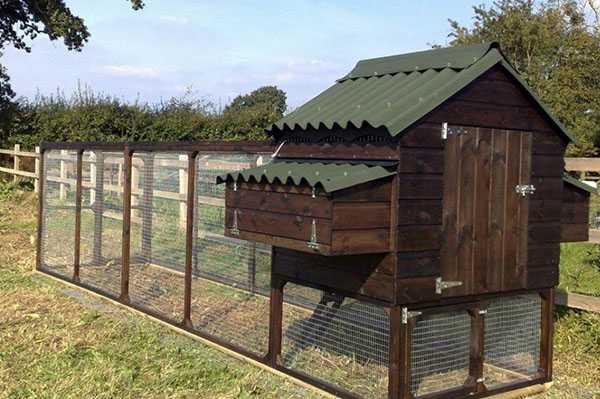
Columnar
The preparation of the columnar foundation begins with the marking of the territory. To indicate the location of the corners, you need to drive the pegs into the ground and wrap the rope around the perimeter. Then you need to do the following:
- Remove the topsoil with a shovel 20-30 cm thick.
- Dig holes 0.5 m deep for each foundation pillar. The pillars must be placed at a distance of 1-1.5 m from each other.
- Erect pillars so that they rise 20-30 cm above the ground.
- Lay roofing material, strapping and logs on the surface of the posts. To protect the substrate from decay, it is recommended to use a double layer of roofing material.
Tape
The construction of a strip foundation is the simplest option. For this you need:
- Dig a hole 30 cm deep, the sides of which will exceed the dimensions of the house by 20-30 cm.
- Compact the soil and equip a crushed stone pillow 10-15 cm thick.
- Place the formwork on the crushed stone cushion and lay a layer of waterproofing material.
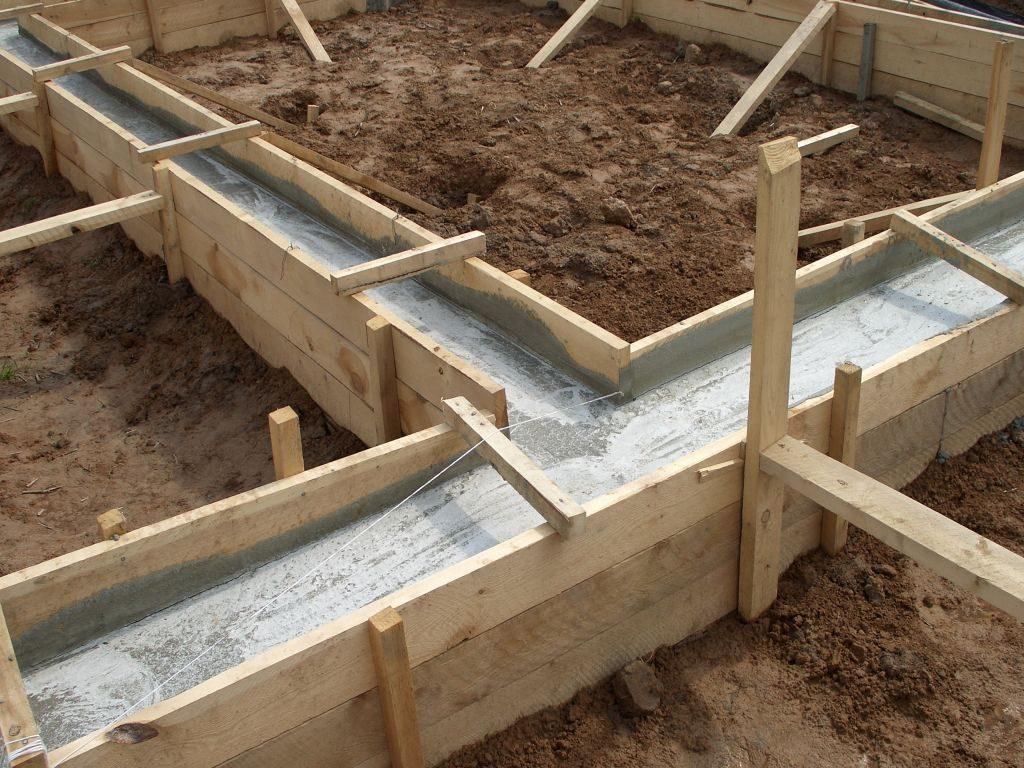
Floor making
It is advisable to equip a plank surface as a floor, on which soft flooring will be located in the future. The basis of the floor is a lathing block, on which boards are hemmed. For the purpose of high-quality insulation, the boarding can be made from both sides.
Walling
For the construction of walls, you can use wooden beams or bricks. It is best to give preference to the beams, since in this case additional insulation of the chicken coop is not required. The wall construction process requires:
- Place the supporting frame using wooden beams. The cross-section of the timber should be from 5 cm.
- Sheathe the formed house frame with lumber. During sheathing, insulation must be placed between the layers.
- Fill existing voids in the outer and inner lining with thermal insulation material.

To provide protection against rodents, it is not allowed to leave gaps in the walls of the structure. For reliability, it is recommended to shield the house with slate, digging it into the ground so that about 30 cm remains above the surface.
Ceiling and roof
The top of the house can be set up in several ways. The height of the chicken coop during the construction of the ceiling and roof is determined depending on whether you need to go inside.
No overlap
If the chicken coop is without overlap, the walls are left at the level of 1.4-1.5 m, and the roof is made gable, raising the ridge to 2 m.This will allow you to move freely in the central part and at the same time save money on roofing material.
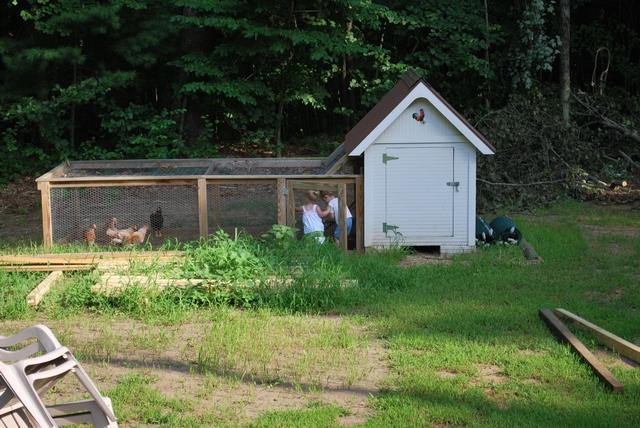
On the pillars
When constructing a chicken coop on pillars, the roof is made at a height of 1.8-2 m.To enter the birds, they additionally equip an inclined path of boards with thin perches fixed every 10 cm.
Wall cladding and insulation
Insulation and wall cladding works are carried out to protect the premises from blowing through, frost and other external influences. To sheathe a building, you can use different materials that differ in technical parameters.
Mineral wool
Thermal insulation with mineral wool is carried out during the construction of a poultry house according to the frame principle. The frame is sheathed from the outside, laying an insulating layer under the base material. A ventilation space of 2-3 cm is left between the insulation and the outer cladding. To insulate the chicken coop, it is better to use hard or semi-rigid cotton wool, cut it into pieces of suitable length and insert it into the spacer between the posts.

Styrofoam and expanded polystyrene
If the chicken coop is built according to the frame principle, the material is laid between the posts by analogy with mineral wool. Styrofoam or expanded polystyrene is cut with a saw and fixed with polyurethane foam. To keep the insulation securely in place, slats are installed along the racks on both sides. The material can be laid both from the side of the street and directly from the premises.
Internal arrangement of the chicken coop
Inside the poultry house, it is required to create comfortable conditions for keeping chickens. Straw or hay is laid on the floor as soft flooring. You also need to provide for the presence of a sufficient number of perches, feeders, drinkers, lighting and heating devices.
Walking yard
Next to the building, you need to equip a yard for walking. The possibility of occasional exposure to the open air has a positive effect on the development and productivity of birds. If possible, a walking yard should be located in a grassy area. The yard is fenced off, and a net is pulled on top to protect it from birds of prey and rodents.
